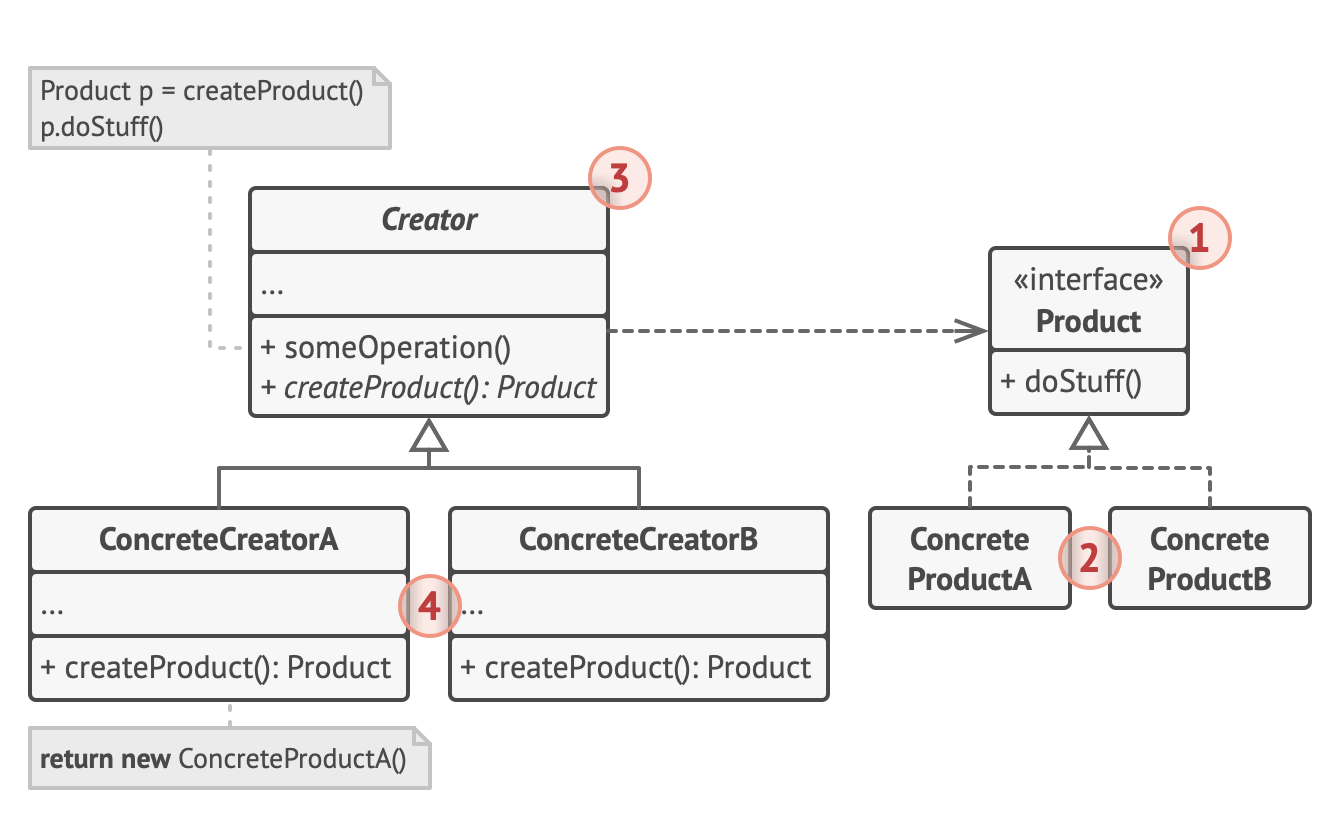Factory
- it is an interface for creating an object which lets subclasses decide which class to instantiate
- also know as the virtual constructor pattern
Analogy
- assume a phone in an elementary form has
- a model name, processor type, amount of RAM, dimensions, screen resolutions
- a phone factory can manufacture all kinds of phones
- only need to supply a combination of feature attributes to get the job done
- once a combinations of specs listed as model A, B, and C are available
- do not need to specify the specs again
- in conclusion, the factory pattern allows generation of preconfigured custom objects easily
- without the need to pass in contructor options each time
Structure

-
The Product declares the interface, which is common to all objects that can be produced by the creator and its subclasses.
-
Concrete Products are different implementations of the product interface.
-
The Creator class declares the factory method that returns new product objects.
- It’s important that the return type of this method matches the product interface.
- You can declare the factory method as abstract to force all subclasses to implement their own versions of the method.
- As an alternative, the base factory method can return some default product type.
- Note, despite its name, product creation is not the primary responsibility of the creator.
- Usually, the creator class already has some core business logic related to products.
- The factory method helps to decouple this logic from the concrete product classes.
- Here is an analogy: a large software development company can have a training department for programmers.
- However, the primary function of the company as a whole is still writing code, not producing programmers.
-
Concrete Creators override the base factory method so it returns a different type of product.
- Note that the factory method doesn’t have to create new instances all the time.
- It can also return existing objects from a cache, an object pool, or another source.
Summary
- factory pattern provides an interface for constructing pre-configured objects
- code is cleaner and resilient
- pattern is useful when writing packages for public use
- allows an easy to understand interface to the package functions